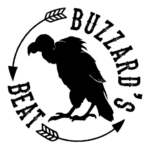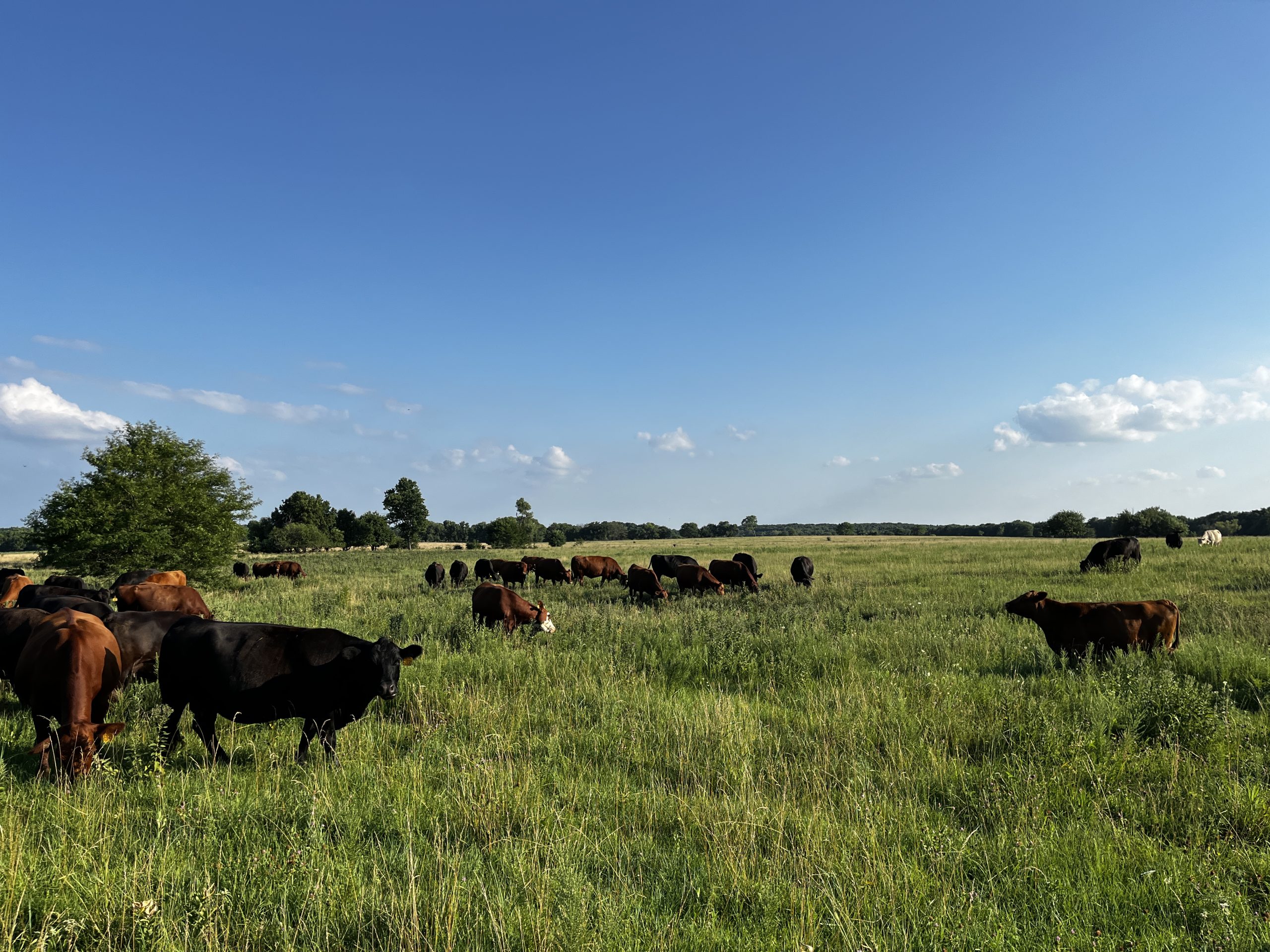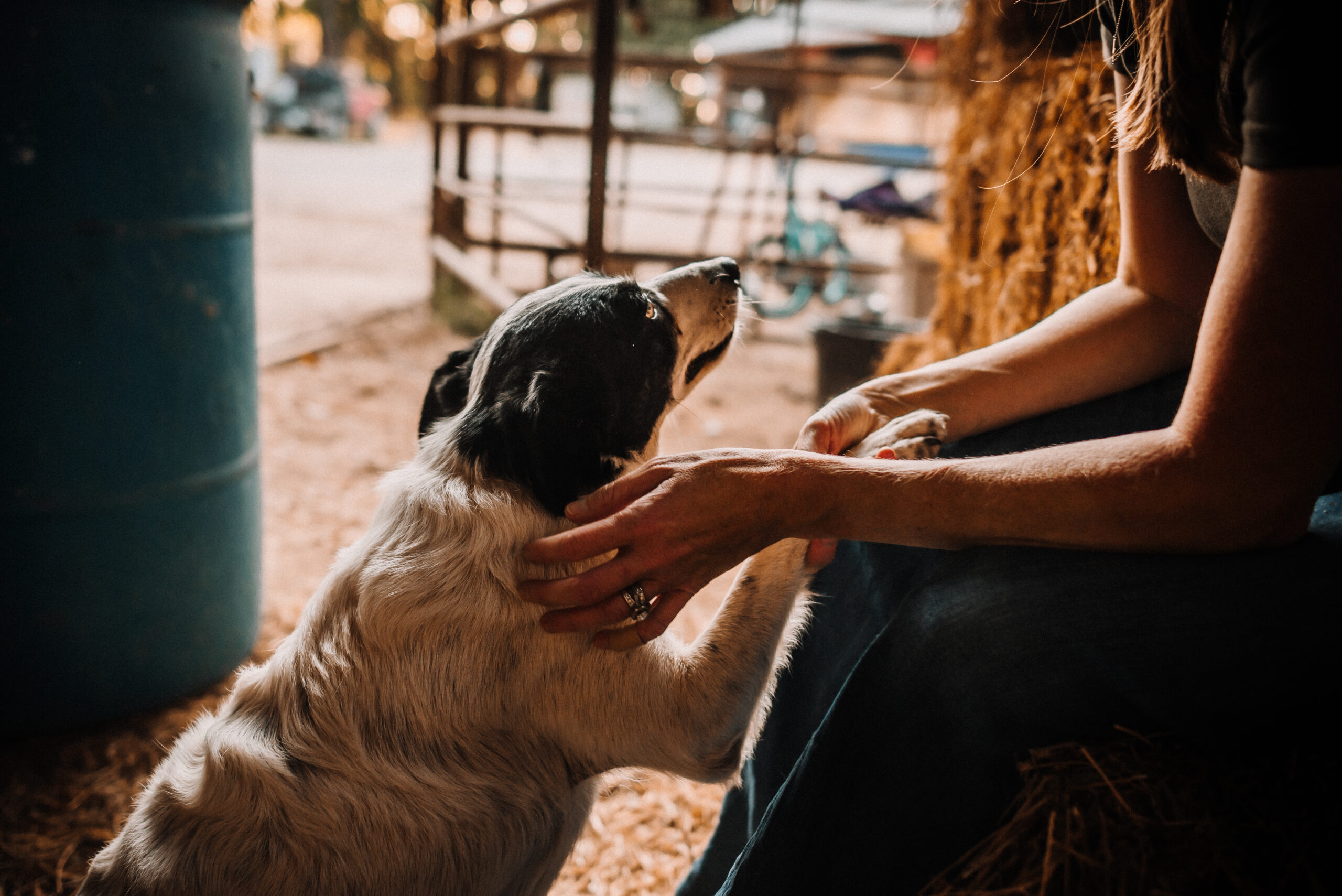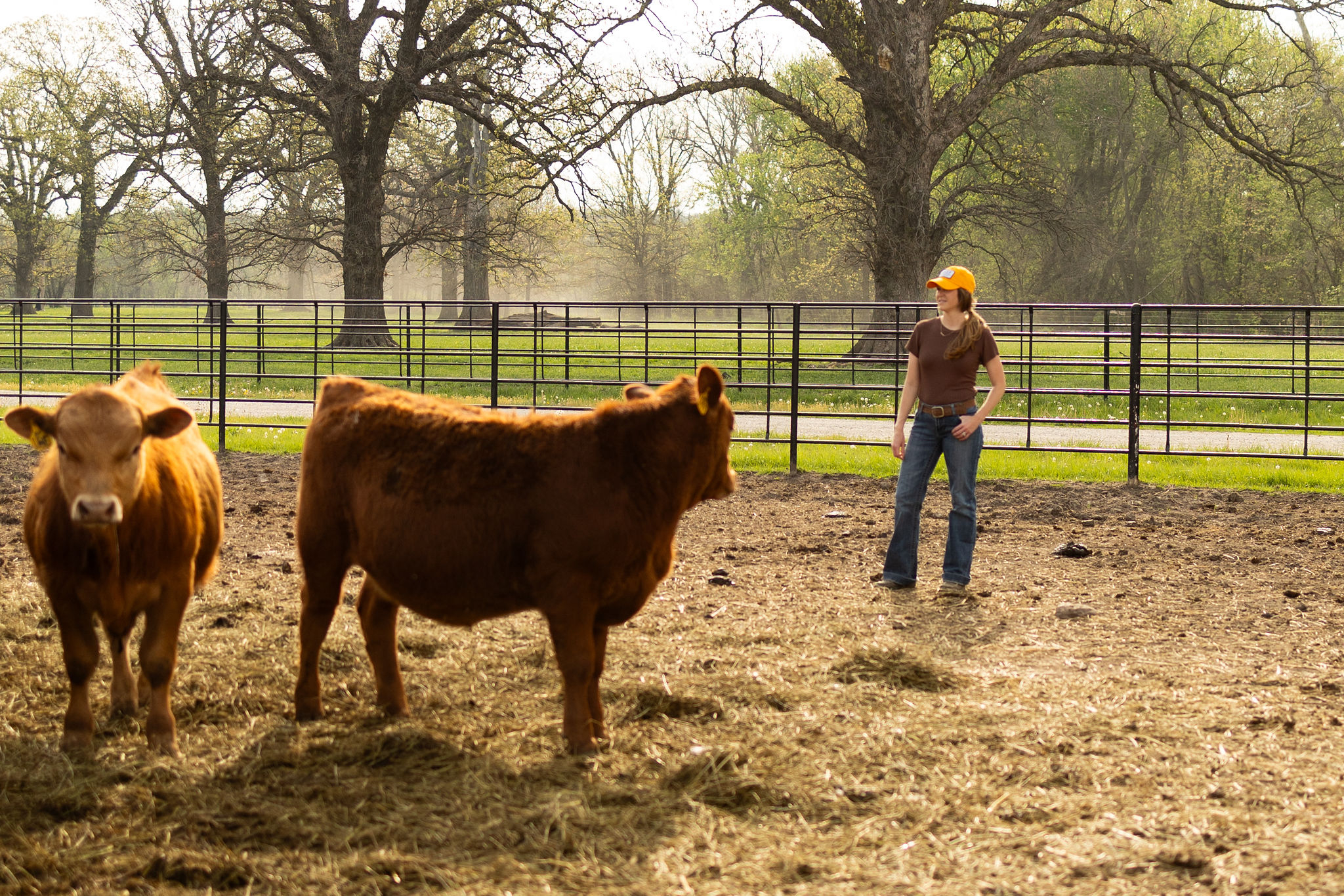It shouldn’t surprise anyone that it’s miserably hot here in Kansas – it is August – however, that doesn’t mean it’s enjoyable. Earlier this summer, I shared ways that cattle farmers and ranchers work to prevent heat stress in their animals in the face of dangerous temperatures but heat can have other serious effects on livestock and people, even if they don’t terminally succumb to it.
Thankfully, on our ranch, we haven’t lost any cattle to the heat but the stresses of summer can have other negative consequences on livestock. For example, when the temperature climbs too high, cattle will seek shade and only graze during the early morning or in the evening when the day has started too cool. The rest of the time they will relax in the shade or maybe take a dip in a pond, which is great for their welfare but if they aren’t grazing, they aren’t gaining weight or producing milk for their calves. We want our stocker cattle gaining as much weight from the grass as possible so that we can sell them to the next producer in the beef lifecycle, but if it’s too hot to eat, we aren’t able to do much about it. Similarly, producers who calve out their cows in the spring will have cow-calf pairs during these sweltering summers, and if the cows aren’t grazing, they aren’t producing as milk for their calves. Furthermore, extended heat can cause fertility challenges in both bulls and cows.

Another unintended, and devastating, side effect of prolonged heat is drought which is ravaging farms and ranches all over the United States. At the beginning of July, thirty-seven states were experiencing some level of drought and that number may continue to increase. If pastures aren’t receiving moisture to grow grass, cattle will have nothing to eat and producers will have to start feeding harvested hay. At some point, producers in drought conditions will be forced to make hard decisions about how many cows have to be sold based on how much hay they need to get through the winter and early spring. You may have seen a video or news report of cattle trailers lined up on the way to livestock auction barns – sadly, herd reduction happens in times of drought.
A consequence of herd reduction is fewer cows in the beef supply to raise calves and fewer calves means less beef availability. I’m not an experienced economist, however, fall of 2023 and into the early party of 2024 could see increased beef prices based on steady demand and a decreased cattle supply. While I don’t foresee empty grocery store shelves by any means, this could be an opportunity to seek out a local farmer or rancher and dip your toe into purchasing custom freezer beef. Only time will tell if my prediction runs true – I genuinely hope and pray that cattle country receives moisture soon, as the livelihoods of many people rely on unpredictable and uncontrollable weather patterns.
Until next time,
~ Buzzard ~
This post originally appeared on the Kansas Living Magazine website.



